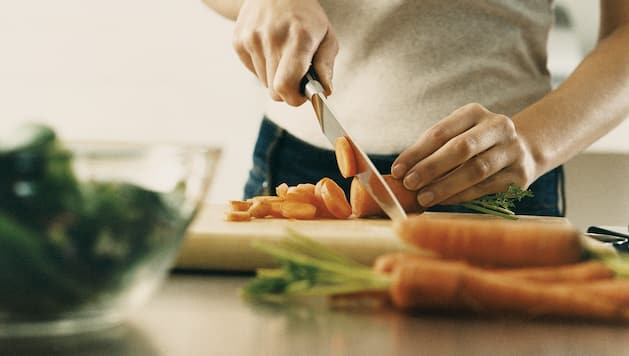Vegetables contain many valuable vitamins and minerals. But there are different opinions on how best to record them. The myth that nutrients are lost during cooking persists. While it applies to some vegetables, cooking, roasting, roasting, or steaming can actually increase the nutrient intake of certain varieties.
It is not without reason that the cartoon character Popeye loved to eat spinach: After all, the green leafy vegetable is full of vitamin C, magnesium, iron, vitamin B6 and calcium. Studies show that most warm cooking methods make spinach healthier. Cooking destroys the substance oxalate in spinach, which blocks the absorption of calcium and iron in the gut.
Carrots contain a lot of beta-carotene, which is good for the heart, circulation and skin, among other things. However, the body has difficulty absorbing the substance from raw carrots: it is easier if the vegetables are cooked. Because when the carrot is cooked, the cell walls swell and the beta-carotene dissolves. In order for the body to be able to process beta-carotene, it also needs some fat.
Green beans contain a protein called lectin that interferes with the absorption of nutrients. Consuming raw green beans can even cause symptoms like nausea, dizziness, or diarrhea. Heating – especially at very high temperatures – deactivates the lectins and increases the nutritional value.
Celery juice has been hyped for years. No wonder: After all, the vegetable contains antioxidants, fiber, potassium and vitamins A, C and K. According to studies, cooking celery increases the vitamin K and antioxidant content. You have to live with a loss of vitamin C and fiber.
Tomatoes are one of the best sources of the antioxidant lycopene, which is thought to reduce the risk of cancer and prevent heart disease. Cooking makes it easier for the body to absorb the substance.
Cutting garlic releases the compound allicin, which contributes to a healthy heart and may reduce the risk of cancer. However, this substance is deactivated again by heating and is lost. So it is better to eat garlic raw.
Similarly, onions are higher in raw thiosulfinate, a compound that helps inhibit inflammation and tumor growth. It is lost during cooking, especially if the onions have been cut beforehand. Sautéing onions at low temperature for a few minutes can increase the level of flavonoids.
Beetroot is often available pre-cooked in stores – although it is much healthier raw. Thanks to good nutritional values, it can lower blood pressure, for example. Especially when boiling in water, flavonoids, folic acid and vitamin C are lost.
It’s not for nothing that kale has been trendy for years – the cruciferous vegetable contains high amounts of glucosinolates, which stimulate the immune system and have an antibiotic effect. Heat can destroy these and also lower levels of vitamin C, potassium, magnesium, iron and zinc.
This article was written by (ncz/spot)
Lucas Cordalis did not exactly become a crowd favorite in the jungle camp. Even behind the cameras there was little sympathy for Daniela Katzenberger’s husband, as show author Micky Beisenherz has now revealed.
Anne Will surprised a few weeks ago with her soon-to-be talk show – something has also changed privately with the presenter: she is said to be newly in love. Her new friend is 26 years younger and writer Helene Hegemann.
The original of this article “Which types of vegetables become more nutritious through heat” comes from spot on news.
